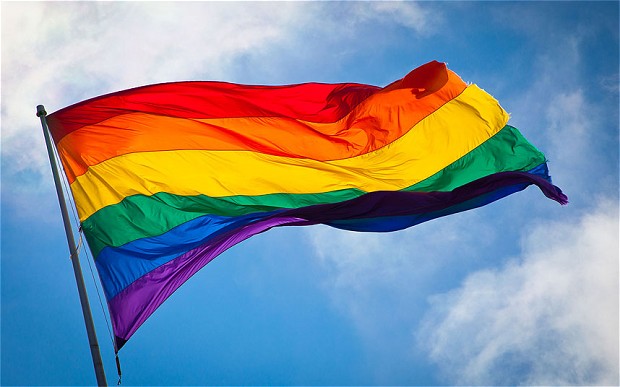 With the Canadian government on the verge of legalizing and regulating the use of marijuana, a revenue generator for incompetent politicians and a pending policy disaster for its citizens, it is time to start looking at the hard research data on the effects of marijuana use. Many people think it to be a harmless, recreational drug with little to no side effects and teenagers seem to be under the impression that there is no downside to its use at all. Those who are for the legalization and use of marijuana have done a masterful job at downplaying, and outright hiding, the risks of the drug.
With the Canadian government on the verge of legalizing and regulating the use of marijuana, a revenue generator for incompetent politicians and a pending policy disaster for its citizens, it is time to start looking at the hard research data on the effects of marijuana use. Many people think it to be a harmless, recreational drug with little to no side effects and teenagers seem to be under the impression that there is no downside to its use at all. Those who are for the legalization and use of marijuana have done a masterful job at downplaying, and outright hiding, the risks of the drug.
With legalization, which is for all intents and purposes the governments imprimatur on its use, use will greatly increase both among current users while also bringing new users into the fold, as has been the case with legalization in Colorado and Washington.
Weed use amongst teenagers and college students is nearing epidemic levels and helps to reiterate how unintelligent most teens are when it comes to making healthy decisions with a clear view to their futures. The “pot lobby” has done a tremendous job with their propaganda on how “harmless” recreational marijuana use is, despite the mountain of evidence to the contrary. What follows is just a small sampling of the hundreds of studies that have been done that highlight the horrible consequences for those who choose to harm themselves by smoking pot. To wit:
1) Frequent use of marijuana increases the risk of psychosis in teens by 159 percent.
Our results show that while marijuana use is associated with a number of cognitive and mental health symptoms, only an increase in symptoms of depression – such as negative thoughts and low mood – could explain the relationship between marijuana use and increasing psychotic-like experiences in youth, says Bourque.
2) Those who use marijuana in high school underperform their peers.
The researchers found that using marijuana just once a month was linked to a student being four times more likely to play hooky; between two and four times more likely to not complete homework; and only half as likely to get good grades.
For students who consumed weed on a daily basis, their desire to go to college, as opposed to simply completing— or even dropping out of— high school, was about 50 percent lower than it had been prior to them making their consumption as habitual, the study found.
3) Marijuana use increases the risk of stroke and heart failure.
…Cannabis consumption was found to increase the risk of stroke by 26 percent, and the risk of developing heart failure by 10 percent. This was after having controlled for other health factors, such as smoking and alcohol consumption.
4) The younger a person starts smoking pot, the greater their future health problems can be.
A review of longitudinal studies showed that smoking weed when under 15 contributes to memory loss, cognitive impairment, diminished IQ, and lower success in school, along with a higher risk for respiratory diseases and certain cancers.
“We found that if the age of first use is below 15, it’s always bad for you,” says study co-author James McIntosh, a professor of economics in the Faculty of Arts and Science, in a university news release.
5) Smoking pot can raise your risk of developing Alzheimer’s Disease later in life.
The study found abnormally low blood flow in the hippocampus — the portion of the brain paramount to memory and learning functions — among marijuana users, suggesting use of the drug might raise the risk of developing Alzheimer’s disease.
6) Marijuana users are twice as likely to have gum disease than non-smokers.
They found that participants who used recreational cannabis frequently were significantly more likely to have greater pocket depth and suffering from moderate to severe gum disease than those who used cannabis less frequently or not at all.
“Even controlling for other factors linked to gum disease, such as cigarette smoking, frequent recreational cannabis smokers are twice as likely as non-frequent users to have signs of periodontal disease,” Shariff says in a university press release.
7) People who are crossfaded — both drunk and high at the same time — while driving are more than five times more likely to be in a car crash.
While it’s not surprising that alcohol on its own increases one’s risk of crashing by 437 percent, it might surprise some to learn that weed consumption increases one’s collision risk by 62 percent.
Drivers who were at fault in collisions were nearly three times as likely as the other party to be intoxicated by alcohol, twice as likely to be under the influence of marijuana, and four times as likely to be inebriated by both.
8) Marijuana use in college or university linked to lower grades.
Those who drank a medium-to-high amount of alcohol, but didn’t consume much marijuana found themselves with a lower GPA mostly during their first semester— their grades in the long-term weren’t significantly affected.
“Doing a lot of both drugs had a significant impact, in terms of lower grades in our study, and in other studies, with number of leaves of absences and those who dropped out of school,” says Godfrey Pearlson, the study’s senior author, in a news release.
9) Early marijuana use associated with abnormal brain function and lower IQ.
In a new study, scientists in London, Ontario have discovered that early marijuana use may result in abnormal brain function and lower IQ.
Marijuana is the most commonly used illegal substance in the world. Previous studies have suggested that frequent marijuana users, especially those who begin at a young age, are at a higher risk for cognitive dysfunction and psychiatric illness, including depression, bipolar disorder and schizophrenia.
10) Marijuana use may cause abnormal sperm shape and size and lead to infertility in men.
A study suggests that smoking marijuana may cause sperm abnormality and put men’s fertility at risk…
The results of the study revealed that marijuana was the only habit studied that was strongly associated with abnormal sperm morphology—that is, sperm that were oddly shaped or sized.
11) Pot use can lead to a dramatic decrease in intelligence over time.
In a 2012 report, researchers from Duke University analyzed data from Dunedin and found that the earlier and more frequently a person smoked pot, the greater the loss of intelligence by age 38. Compared to their IQs measured at age 13, people who had started using cannabis as teens and maintained a daily pot habit into adulthood had, on average, a six-point drop in IQ. The decline was not trivial: By age 38, their average IQ was below that of 70 per cent of their peers, according to the report, published in the journal PNAS.
12) Teens who smoked pot regularly severely affected their future educational opportunities and were far more likely to move on to harder drugs.
Teens who smoke pot daily are 60 per cent less likely to finish high school or get a university degree than their weed-free peers, according to a high-profile study published in September in the Lancet.
The researchers, mainly from Australia, looked at outcomes from three long-term studies conducted in Australia and New Zealand. They compared participants’ life status at age 30 to their patterns of marijuana use before age 17 (never, less than monthly, monthly or more, weekly or more, or daily).
Compared to people who had never used cannabis, those who were daily users before age 17 had an 18-times greater chance of becoming cannabis dependent. They were eight times more likely to use other illicit drugs in adulthood, and seven times more likely to attempt suicide.
13) Heavy marijuana use can lead to uncontrolled nausea and vomiting.
The answer was cannabinoid hyperemesis syndrome, or CHS. It’s caused by heavy, long-term use of various forms of marijuana.
14) Regular cannabis use leads to a decrease in creativity, not an increase as some report.
Regular cannabis use is linked to worse creative thinking, new research concludes. They also find it harder to spot their own mistakes. The conclusions come from a series of studies carried out by psychologist Mikael Kowal.
15) Smoking pot can lead to addiction, depression, anxiety, headaches, memory loss, paranoia, and sleep disorders.
16) Smoking pot makes people poorer and less responsible.
A recent study by Steven Davenport of RAND and Jonathan Caulkins of Carnegie Mellon notes that “despite the popular stereotype of marijuana users as well-off and well-educated … they lag behind national averages” on both income and schooling.
But the poor, who already have a hard time holding down jobs and taking care of their families, are more frequently using a drug that makes it harder for them to focus, to remember things and to behave responsibly.
17) Secondhand marijuana smoke may damage your blood vessels even more than cigarette smoke.
“There is widespread belief that, unlike tobacco smoke, marijuana smoke is benign,” Springer said. “We in public health have been telling the public to avoid secondhand tobacco smoke for years. But we don’t tell them to avoid secondhand marijuana smoke, because until now we haven’t had evidence that it can be harmful.”
18) Marijuana use by teens linked to permanent brain abnormalities later in life, and increased schizophrenia risk.
Teenagers who regularly use cannabis during their adolescent years may cause permanent brain abnormalities by using the drug, and increase their risk of developing serious mental disorders such as schizophrenia, a study published this month in the journal Neuropsychopharmacology, a division of the journal Nature, hints at.
19) Teenagers who regularly smoke cannabis are putting themselves at risk of permanently damaging their intelligence and lowering their IQ, according to a landmark study.
Researchers found persistent users of the drug, who started smoking it at school, had lower IQ scores as adults.
They were also significantly more likely to have attention and memory problems in later life, than their peers who abstained.
Furthermore, those who started as teenagers and used it heavily, but quit as adults, did not regain their full mental powers, found academics at King’s College London and Duke University in the US.
20) Harvard Scientists studied the brains of pot smokers and the results do not look good.
According to a new study published in the Journal of Neuroscience, researchers from Harvard and Northwestern studied the brains of 18- to 25-year-olds, half of whom smoked pot recreationally and half of whom didn’t. What they found was rather shocking: Even those who only smoked few times a week had significant brain abnormalities in the areas that control emotion and motivation.
“There is this general perspective out there that using marijuana recreationally is not a problem — that it is a safe drug,” said Anne Blood, a co-author of the study. “We are seeing that this is not the case.”
Shockingly, every single person in the marijuana group, including those who only smoked once a week, had noticeable abnormalities, with the nucleus accumbens and the amygdala showing changes in density, volume and shape. Those who smoked more had more significant variations.
21) Cannabis use makes people more violent, moreso than alcohol.
Cannabis users are more likely to commit violent crime, pioneering research has shown. It warned those who smoke the drug regularly run an increased risk of using violence against others. The project is the first to demonstrate that cannabis is not only linked with violent crime but is the cause. Violent incidents monitored by the study based on the lives of more than 1,100 American psychiatric patients included assaults, attacks with weapons and rapes.
22) Even casual use of pot has now been shown to have a mental cost of reduced motivation to work.
We found that people on cannabis were significantly less likely to choose the high-effort option.
It is not a pretty picture. These are the facts. If pot is made legal and its use becomes even more commonplace than it already is, we will become a nation of retards as we smoke our brains into oblivious dysfunction.
 4) This past week, Rene Genest, or Zombie Boy, committed suicide at the age of 32. Social media was full of platitudes and condolences and calls for mental illness to be taken more seriously. Suicide is always horrible and a grotesque act of selfishness; we should feel intense sorrow for those left behind. But let’s be clear about one thing: Zombie Boy wore his mental illness for all to see in the tattoos that covered his face and body. So those shocked and saddened, shouldn’t be, for we know that tattoos are an outward indicator of inner problems. Rather than lauding his disfigured appearance, friends should have come alongside him and recognized these symbols of pain scarring his skin.
4) This past week, Rene Genest, or Zombie Boy, committed suicide at the age of 32. Social media was full of platitudes and condolences and calls for mental illness to be taken more seriously. Suicide is always horrible and a grotesque act of selfishness; we should feel intense sorrow for those left behind. But let’s be clear about one thing: Zombie Boy wore his mental illness for all to see in the tattoos that covered his face and body. So those shocked and saddened, shouldn’t be, for we know that tattoos are an outward indicator of inner problems. Rather than lauding his disfigured appearance, friends should have come alongside him and recognized these symbols of pain scarring his skin.

 There are certain words that have always been favourites of mine that make me take immediate notice when I hear them. Words such as fear, vengeance, justice, and reckoning, are but a few. I gravitate towards old, antiquated words and I’ve always loved the word reckoning, for in it, there is such an ominous sense of justice and finality.
There are certain words that have always been favourites of mine that make me take immediate notice when I hear them. Words such as fear, vengeance, justice, and reckoning, are but a few. I gravitate towards old, antiquated words and I’ve always loved the word reckoning, for in it, there is such an ominous sense of justice and finality. It is undeniable that there is a tattoo problem in the world. While it affects almost every age group, millennials in particular have taken to the pseudo art form and scarred themselves, in many instances, irreparably (it’s as artistic as cartoons or notebook doodles; we’ve lost the meaning of the word ‘art’). Is there any surprise that
It is undeniable that there is a tattoo problem in the world. While it affects almost every age group, millennials in particular have taken to the pseudo art form and scarred themselves, in many instances, irreparably (it’s as artistic as cartoons or notebook doodles; we’ve lost the meaning of the word ‘art’). Is there any surprise that  While the statistics about men tattooing themselves are interesting, and do somewhat mirror the statistics pertaining to women, the stats that emerge about tattooed females tell a much bleaker tale of our cultural drift towards the nihilistic and banal. The
While the statistics about men tattooing themselves are interesting, and do somewhat mirror the statistics pertaining to women, the stats that emerge about tattooed females tell a much bleaker tale of our cultural drift towards the nihilistic and banal. The  The hip hop “artist” Drake released a new video this week for a song entitled God’s Plan. You can watch it
The hip hop “artist” Drake released a new video this week for a song entitled God’s Plan. You can watch it 
 Half Dome and Yosemite Valley
Half Dome and Yosemite Valley With the Canadian government on the verge of legalizing and regulating the use of marijuana, a revenue generator for incompetent politicians and a pending policy disaster for its citizens, it is time to start looking at the hard research data on the effects of marijuana use. Many people think it to be a harmless, recreational drug with little to no side effects and teenagers seem to be under the impression that there is no downside to its use at all. Those who are for the legalization and use of marijuana have done a masterful job at downplaying, and outright hiding, the risks of the drug.
With the Canadian government on the verge of legalizing and regulating the use of marijuana, a revenue generator for incompetent politicians and a pending policy disaster for its citizens, it is time to start looking at the hard research data on the effects of marijuana use. Many people think it to be a harmless, recreational drug with little to no side effects and teenagers seem to be under the impression that there is no downside to its use at all. Those who are for the legalization and use of marijuana have done a masterful job at downplaying, and outright hiding, the risks of the drug. I recently
I recently  She turned 29 last week, and Marcy enjoyed an almost
She turned 29 last week, and Marcy enjoyed an almost  The liberal/progressive/leftist world view is riddled with logical inconsistencies. To wit:
The liberal/progressive/leftist world view is riddled with logical inconsistencies. To wit:
 Equality may perhaps be a right, but no power on earth can ever turn it into a fact. –Honoré de Balzac, French playwright
Equality may perhaps be a right, but no power on earth can ever turn it into a fact. –Honoré de Balzac, French playwright